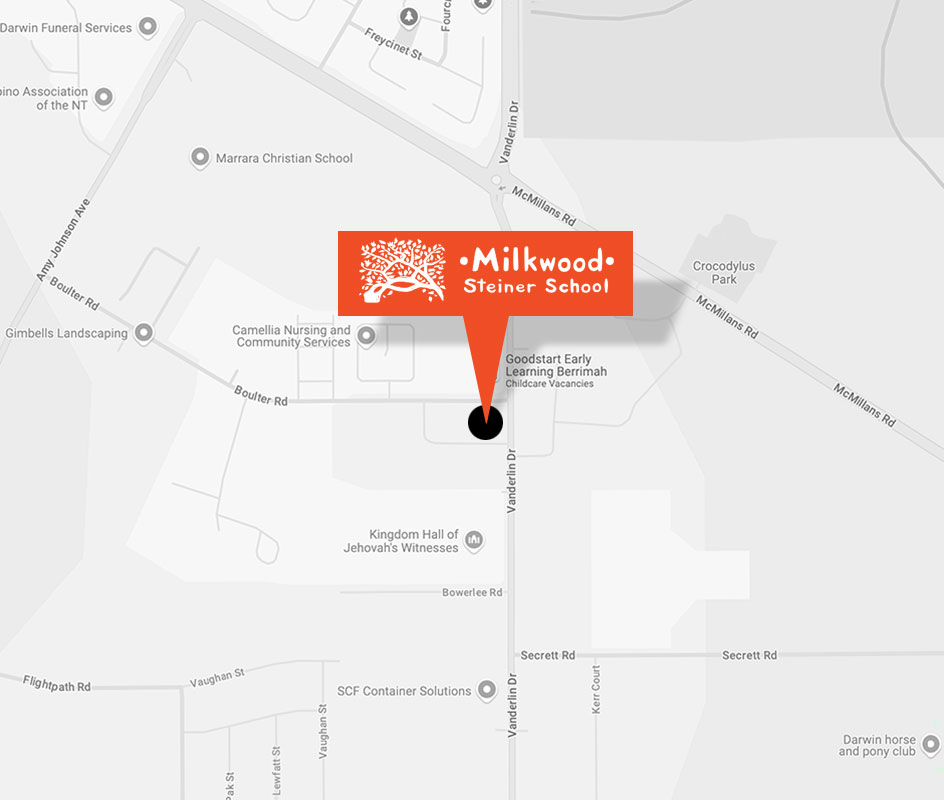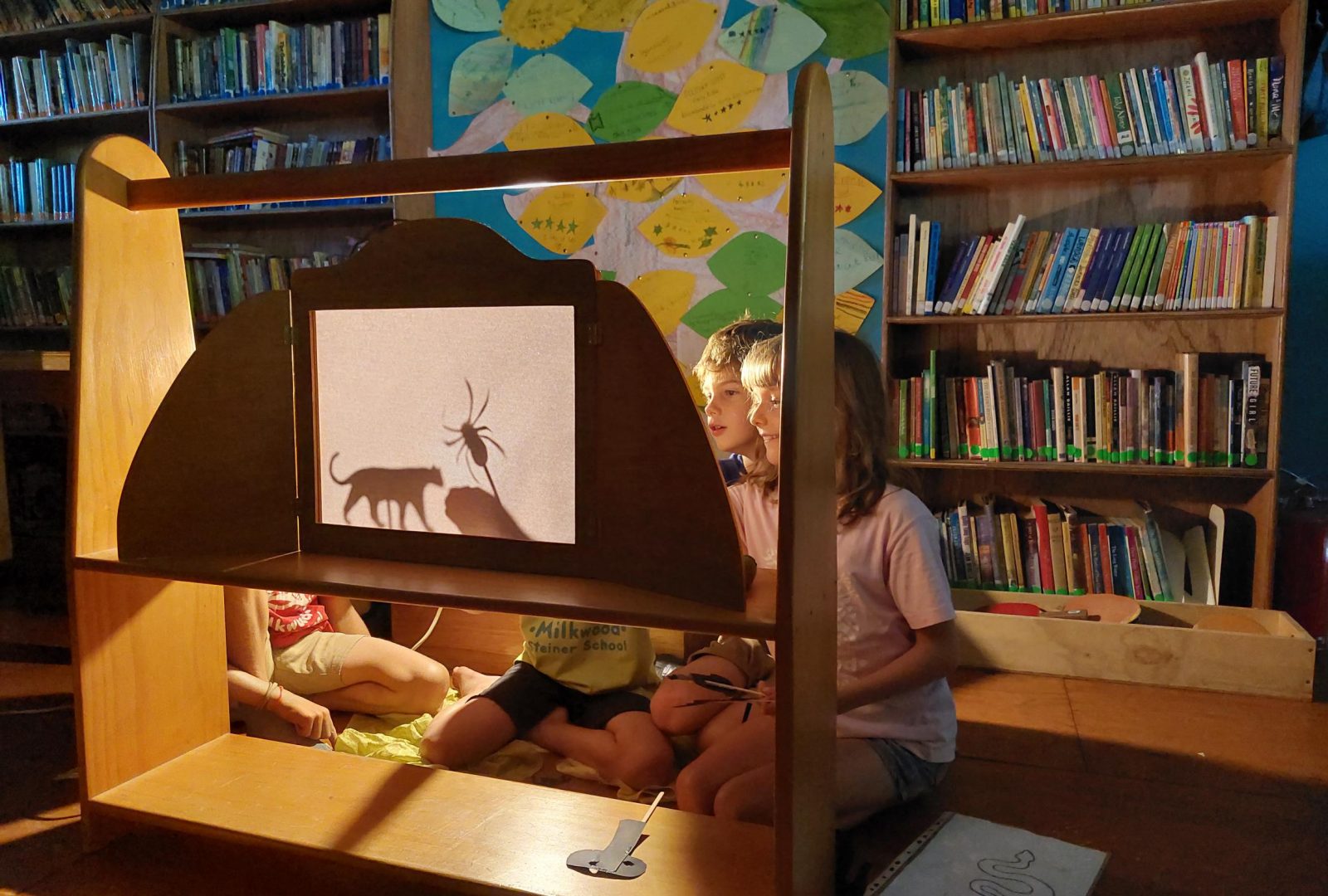Steiner Education
Steiner schools have a unique and distinctive approach to educating children, aiming to enable each stage of growth to be fully and vividly enjoyed and experienced. They provide a balanced approach to the modern school curriculum. The academic, artistic and social aspects, or ‘head, heart & hands’, are treated as complementary facets of a single program of learning, allowing each to throw light on the others. This is implemented by using art as a practice, and language to develop the feelings, by nourishing the children with the rich heritage of wise folk tales, histories, fairy stories, poems, music and games that are part of our world civilisation. This creates the cultural atmosphere in which the children are taught reading, writing, arithmetic, nature study, geography, science, languages, music and other subjects.
Steiner designed a curriculum that is responsive to the developmental phases of childhood and the nurturing of the child’s imagination in a school environment. Steiner thought that schools should cater to the needs of the child rather than the demands of the government or economic forces, so he developed schools that encourage creativity and free-thinking. His teaching seeks to recognise the individuality of the child and through a balanced education, allows them to go into the world with confidence.
Steiner Education is a deeply insightful application of learning based on the Study of Humanity that helps develop consciousness of self and the surrounding world. Steiner’s perception that although external conditions in our time are changing as never before, the essential nature of humanity remains; in particular, the stages of human development through childhood follow a natural pattern unaffected by short term social change. The task of educators remains to prepare children for an unpredictable future by nurturing healthy development ‘from the inside’, to provide the right nourishment at each stage of physical, emotional and spiritual growth.
There is an international group of over 800 schools and 1200 kindergartens in many countries including Australia, Britain, Sweden, Austria, Norway, Germany, Switzerland, Holland, China, Japan, Chile, U.S.A. and Canada. There are currently over 50 schools and Kindergartens throughout Australia, with 6 operating within the State system in Victoria. Although Steiner education has already stood the test of time, many believe it will show its full promise in the 21st century. The significance of its rapid growth around the world indicates that it may well be an education coming into its own because it fosters a thinking that is appropriate for our age. Steiner Education has become one of the largest independent educational movements in the world today.
Milkwood Steiner School is a member of Steiner Education Australia (SEA), the not for profit national association/peak body which represents over 40 Steiner schools and 10 Associate members throughout the states and territories of Australia. The SEA website is a valuable resource for curriculum information and has links and locations to all member Steiner Schools in Australia.
At Milkwood, teachers are dedicated to creating a genuine love of learning within each child. By freely using art, craft, music and language in conjunction with the teaching of academics, learning becomes a living, creative process. Teachers study and work with the indications given by educational philosopher Rudolf Steiner, guided by the nationally accredited Australian Steiner Curriculum framework.
The reverence and respect felt by Steiner teachers for the special qualities of each stage of childhood shapes the school environment, the way teachers communicate with the children, the materials used, the activities undertaken and the approach to learning at each developmental stage.
Rudolf Steiner (1864-1925) was an Austrian philosopher, scientist and humanitarian who has profoundly influenced Western culture. He worked with scientists, artists, doctors, ministers of religion, teachers and industrialists to help transform our civilisation. His work is best known through Steiner Education, Bio-dynamic Agriculture, Anthroposophical Medicine and Architecture. His background in history and civilisations coupled with his observation in life gave the world the gift of Waldorf Education.
Rudolf Steiner was one of the most significant thinkers of the twentieth century, whose work in science, art, agriculture, architecture, health, human development and education continues to be revolutionary today. Rudolf Steiner was born in the Austro-Hungarian empire in 1861 and grew up surrounded by the natural beauty of the Austrian Alps which inspired great wonder and joy, whilst also being exposed to the modern technologies of the era. His father worked as a station master at a small railway station where the young Rudolf Steiner was fascinated by the railway and telecommunications. When he was nine years old, Rudolf Steiner discovered a geometry book belonging to his teacher. He was fascinated and spent many happy hours tackling geometry problems. This same teacher awakened his interest in art and taught him to draw using charcoal. Art is central to the Steiner teaching philosophy. As a teenager, Rudolf Steiner became interested in mathematics and philosophy and from age 15 he tutored fellow pupils and younger children in order to help his parents pay his school fees. His father wanted him to become an engineer, so the family moved nearer to Vienna where Rudolf Steiner could attend university and he began his advanced studies in natural history, physical sciences and mathematics.
During his university years, Steiner became interested in the scientific writings of Johnannes Wolfgang Von Goethe. In Goethe’s writing Steiner found an appreciation and understanding of the spiritual element that lies behind and within nature. He spent seven years editing the scientific writings of Goethe and published his first major work The Philosophy of Spiritual Activity. In 1902, Steiner began lecturing to the Theosophical Society which developed by 1912 into the Anthroposophical Society. Steiner continued to lecture in Dornach, where he directed the building of the Goetheanum as a centre for the growing international movement. At the end of World War 1, Emil Molt asked Rudolf Steiner to establish a modern school for the children of factory workers.
The first Waldorf school was established in Stuttgart in 1919. There are now over one thousand Steiner Waldorf Schools in over 60 countries around the world. It is the fastest growing independent school movement in the world.




